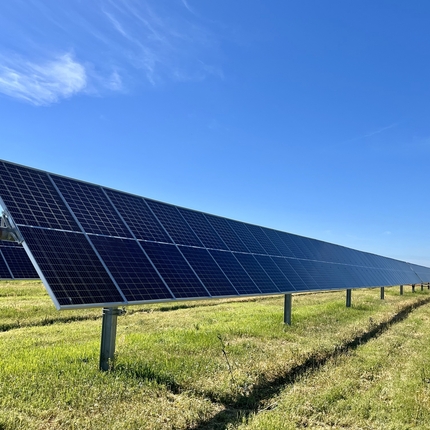Brian Depew, executive director, briand@cfra.org, 402.687.2100 ext. 1015; Teresa Hoffman, senior communications associate, teresah@cfra.org, 402.687.2100 ext. 1012
LYONS, NEBRASKA – The Center for Rural Affairs is pleased to announce that it has been awarded a $62 million grant to transform solar energy accessibility and affordability in Nebraska.
The funding is part of the Environmental Protection Agency's (EPA) Solar for All program, a part of the Greenhouse Gas Reduction Fund established by the Inflation Reduction Act. As part of the program, the EPA awarded 60 grants—totaling $7 billion—to states, territories, Tribal governments, municipalities, and nonprofits to facilitate low-income and historically disadvantaged community participation in residential solar energy. The Solar for All program aims to lower energy costs and reduce pollution in underserved communities across the country by installing solar power systems.
Executive Director Brian Depew said the Center will work with partners and contractors to provide technical and financial assistance to support community, rooftop, and multifamily affordable housing solar projects. The Nebraska Solar for All program will be implemented statewide and include rural, urban, suburban, and Tribal communities. In addition, the program will provide resources to help train workers to install and maintain the new installations.
"This grant represents a transformative opportunity for Nebraska. It will allow us to increase the amount of deployed solar energy in the state by more than 60% over the five-year grant period," Depew said. “Solar for All will help catalyze development across all the major areas of the residential-serving market while ensuring low-income and historically disadvantaged residents can be full participants in the new energy economy.”
The Nebraska Solar for All project aims to reach more than 9,000 households in the state and deploy more than 60 megawatts of solar. The Center's comprehensive strategy includes technical assistance, low-interest loans, grants, and subsidies to support three key components:
- Community solar: Collaborating with public utilities in the state to develop residential-serving community solar arrays, allowing eligible residents to participate through subscriptions or by owning panels.
- Multifamily affordable housing solar: Partnering with utilities, housing developers, and low-income housing financing partners to deploy solar for income-qualified multifamily housing units.
- Rooftop solar: Providing behind-the-meter or rooftop solar for qualified households, screening residents for eligibility and site suitability, and connecting them to technical service providers and solar installers.
The Center is in the process of hiring a new Nebraska Solar for All director to lead the effort, alongside 10 anticipated additional positions.
EPA expects to have contracts in place with awardees by September after which there will be a one-year planning period before the launch of financial products.
In developing its Nebraska Solar for All proposal, Center staff met with more than 50 stakeholders including utilities, state agencies, housing developers, housing organizations, solar developers, workforce partners, community-based organizations, and Tribes.
“We are grateful to all of our partners and collaborators and we look forward to working together to implement Solar for All in Nebraska,” Depew said.
The full list of Solar for All awards can be found at EPA’s website: epa.gov/greenhouse-gas-reduction-fund/solar-all.




